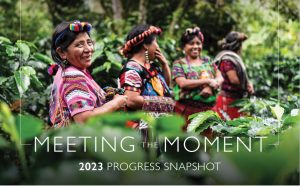2023 Progress Snapshot

2023-Progress-Snapshot-Report-508c.pdf
Conflict, climate change, the enduring impact of the COVID-19 pandemic, and more are contributing to unprecedented global food insecurity. An estimated 205 million people are in dire need of life-saving food assistance and around 735 million people face chronic hunger. This is the scenario we face today and projections point to even greater challenges on the horizon. Over the next two-and-a-half decades, global demand for food is expected to jump by 50 percent. At the same time, farmers will struggle to keep up as they face a changing climate that is driving or exacerbating prolonged droughts, catastrophic storms, wildfires and floods.
But there is a way forward. It’s rooted in Feed the Future, the United States’ government-wide initiative that enables vulnerable communities to boost agricultural productivity and incomes,
reduce hunger, and improve nutrition while coping with unexpected shocks.
As showcased in this report, the work of Feed the Future is more important now than ever. Feed the Future investments – totaling on average $2 billion each year in foreign assistance – help more than 40 vulnerable countries reduce poverty, hunger and malnutrition while building resilience to recurrent crises. In the countries where Feed the Future works, we see stronger food systems, better nutrition and more resilience to shocks. Feed the Future is not only responding to today’s global food security crisis, but those yet to come.
For our global annual data from FY11-22, check out this chart.
